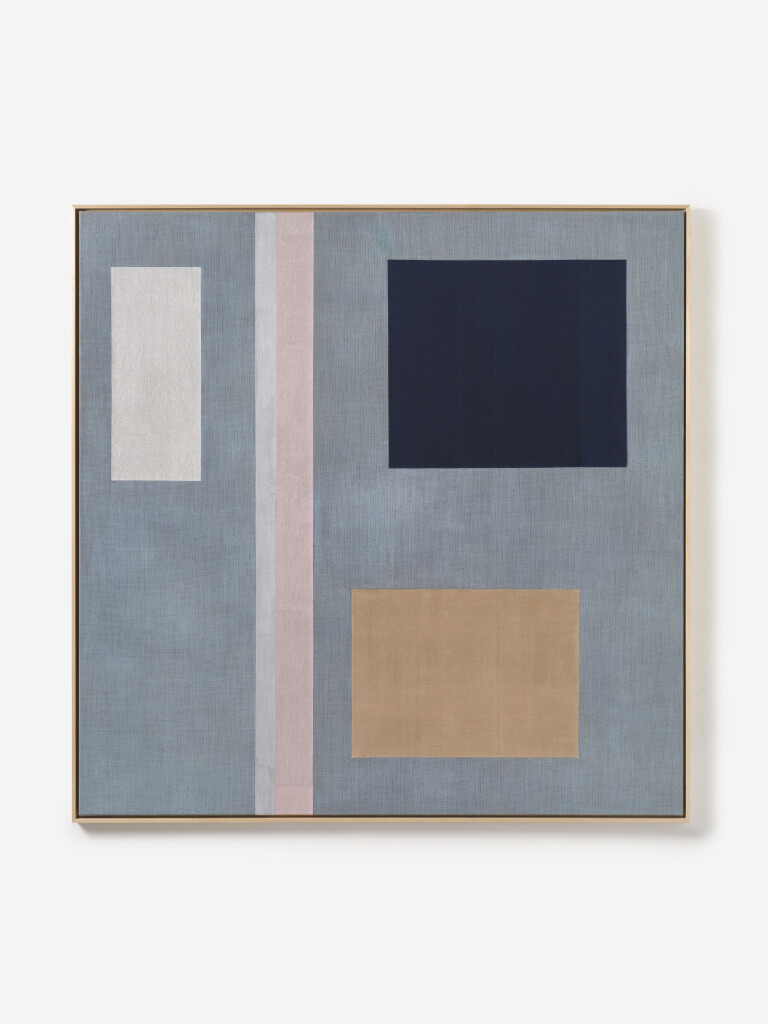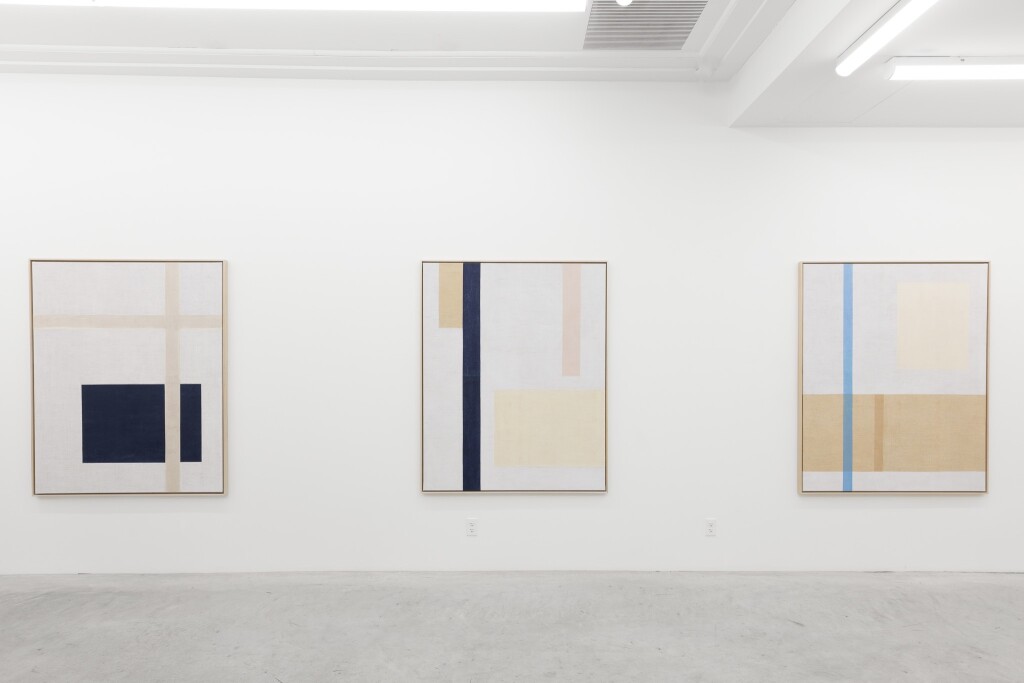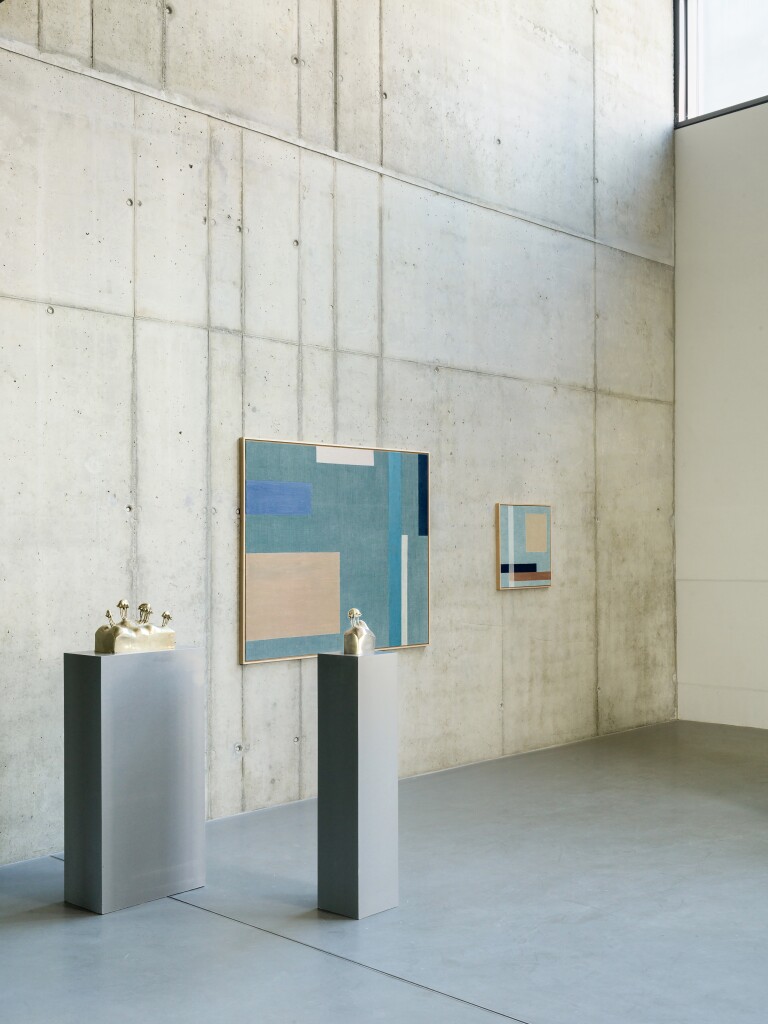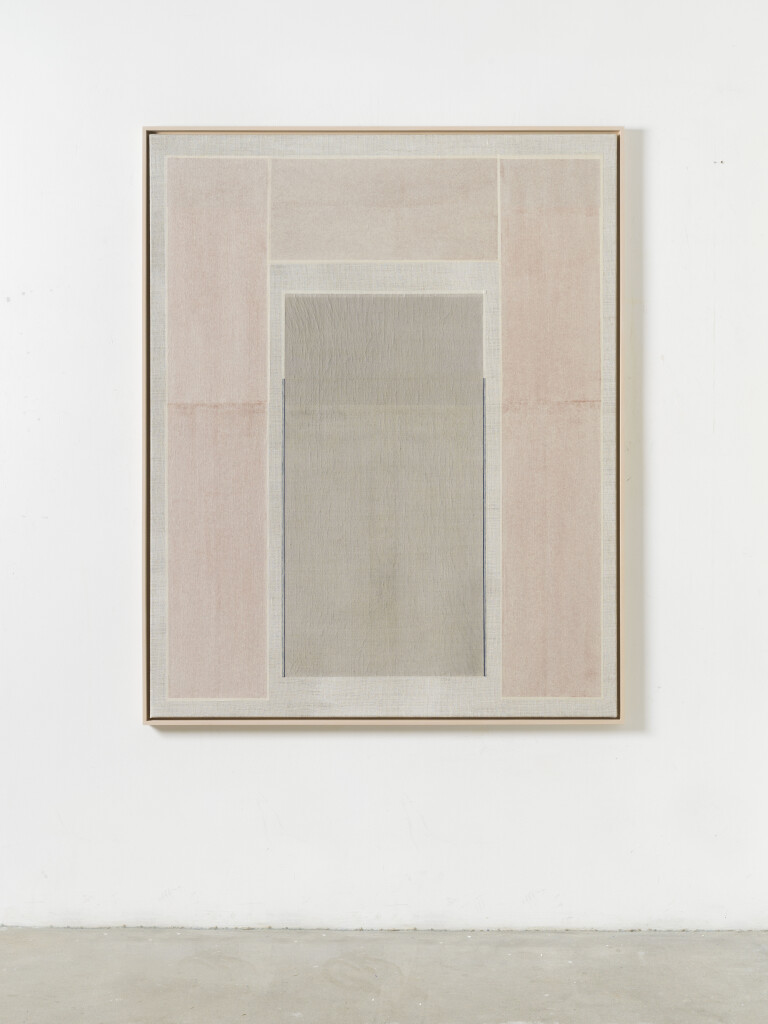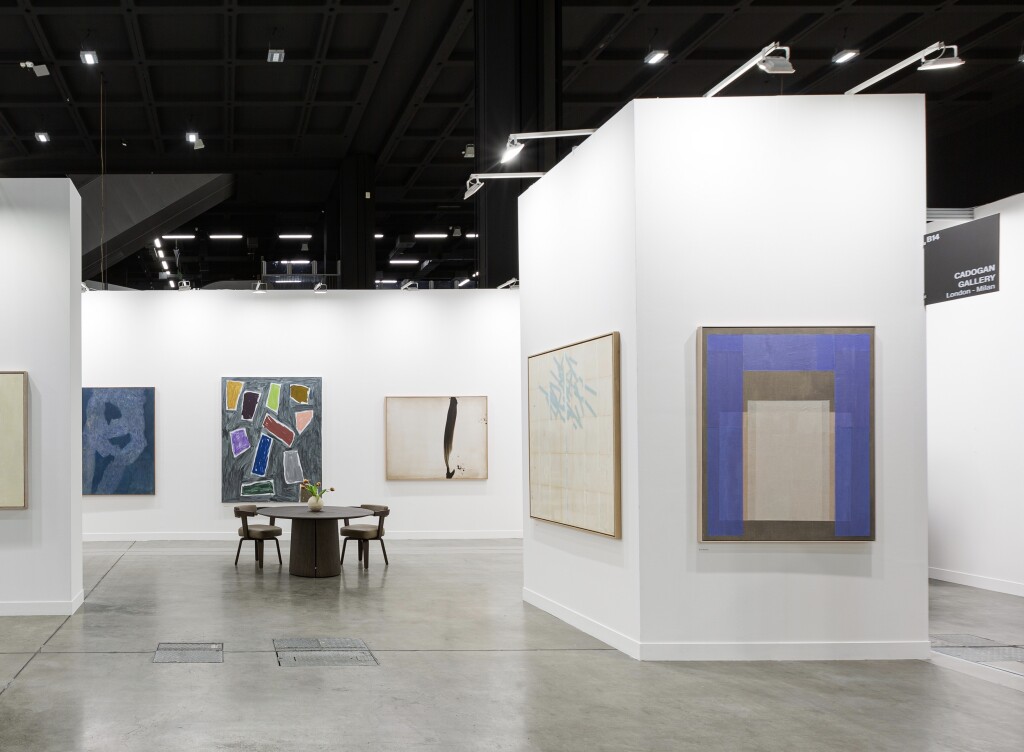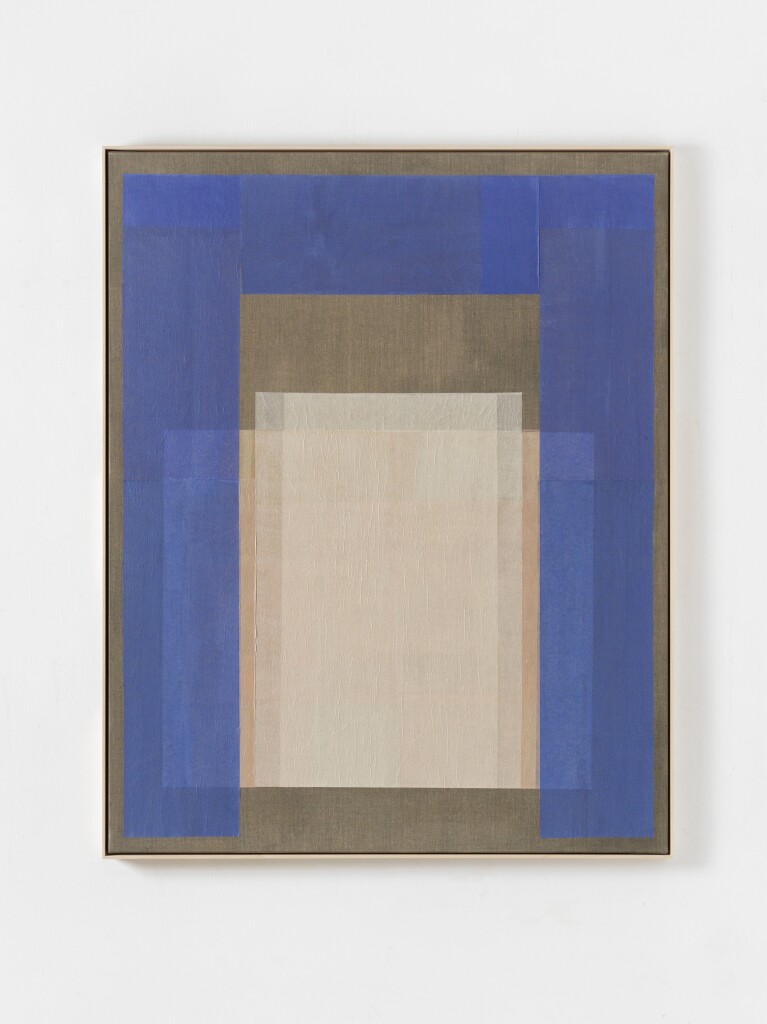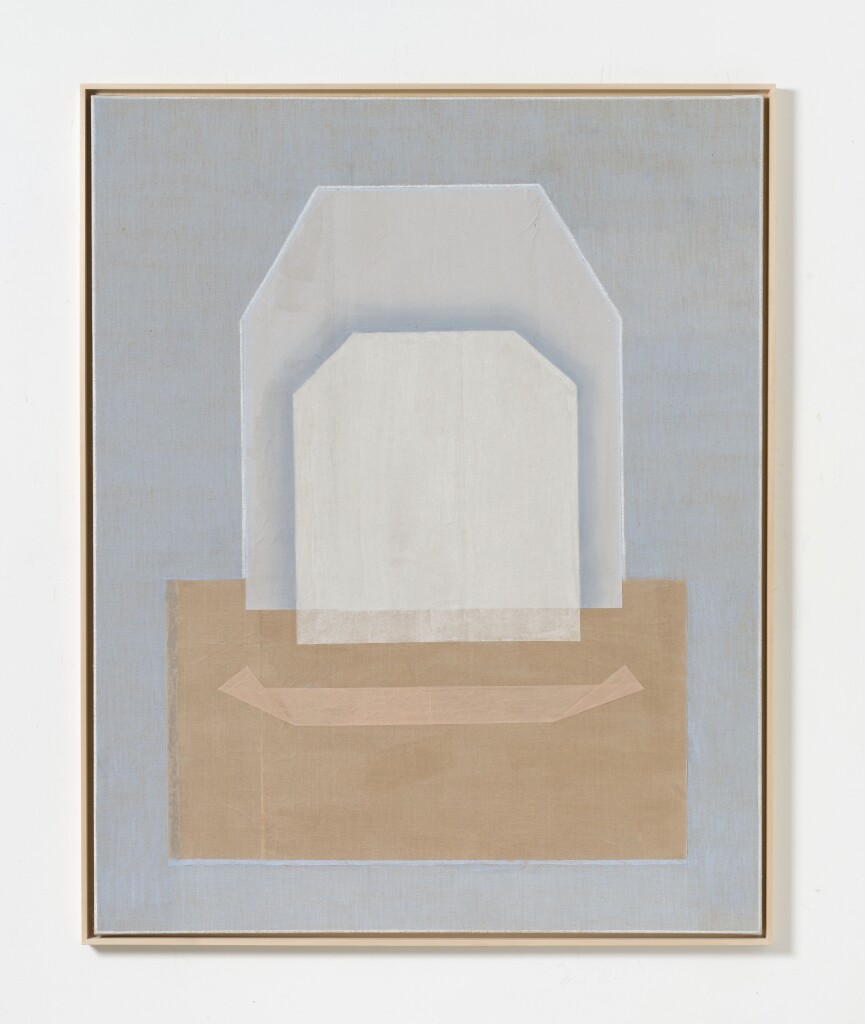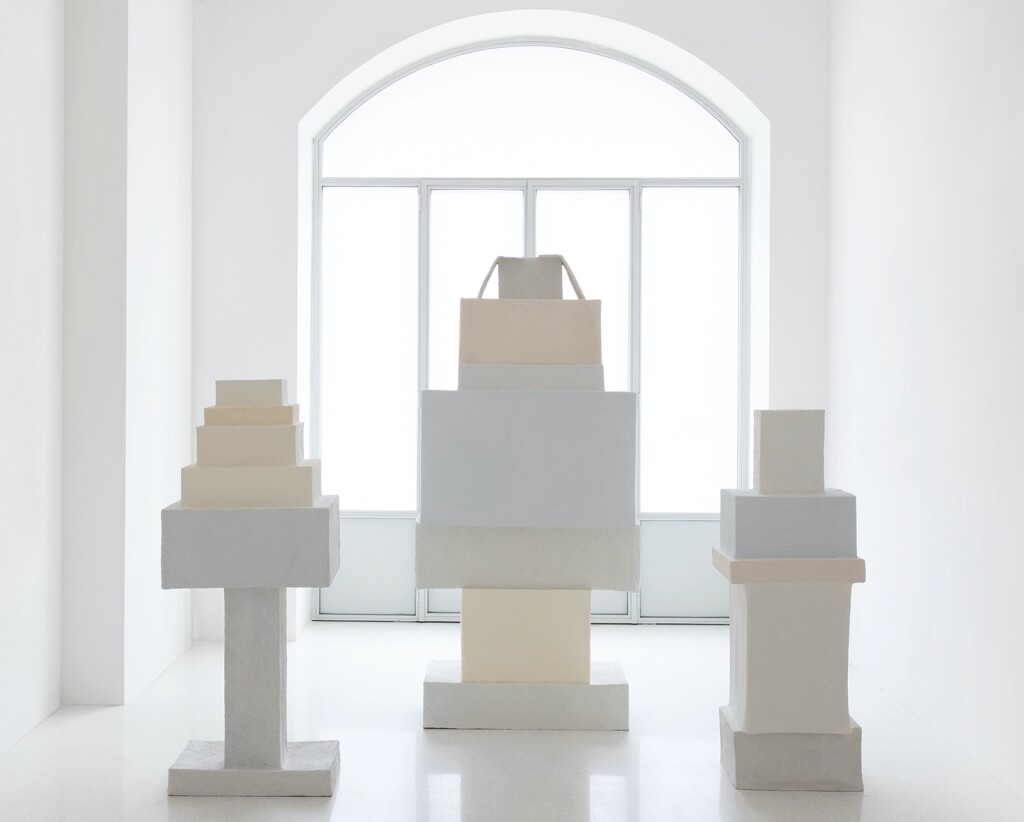ROOMS
April 23 – June 1, 2025
ARDEN + WHITE GALLERY
155, Elm Street, New Canaan, CT 06840
Exhibition at the gallery of the Noack Foundry, Berlin
Sept – Dec 2024
‘Zwischen Tür und Angel’, Solo, Cadogan London, May 2024
Miart Milan April 2024
‘Zwischen Tür und Angel III’ 180 x 160 cm paper on linen 2024
Developing on from an earlier series based on iconic paintings and sculptures of the Renaissance, in her latest body of work, Kim Bartelt applies her distinct abstract geometric style to pared down, emotive scenes inspired by the annunciation. These works refer to the german proverb “Zwischen Tür und Angel”, a sense of something happening in a quick, spontaneous manner, often with someone on the threshold of moving on or passing by. That subtle sense of uncertainty, is both emphasised and defied by her deceptively simple language of rectangles and squares. The artist’s unique way to both reduce and accentuate the metaphysical potency so inherent in all her work.
In Break Easy, the latest series of works by Kim Bartelt, a sequence of bevelled forms, hover in soft, pastel hues on smooth-coloured canvases. These seemingly rigid geometric structures are far from static but seem to tremble in their own symbolic abstraction. Partly made in response to a statement once posed by the poet, Ocean Vuong, that the most powerful and strengthening thing an artist can do, is to “bring down the shield (they’ve) been taught to put up around them”, the works in the series consider the role of the artist; and in doing so, create a visual language that resonates with intellectual introspection and discordant energy.
May 2023, Milan
In her sculptural work, the rigid angular blocks may at first appear robust yet they are a hollow shell, made from stiff, everyday cardboard. At a time when the influence of robotics and advanced AI technology are starting to be felt in the contemporary world – with the capacity, according to many experts, to affect our society to a greater degree than electricity and fire – Bartelt’s sculptures are nothing but fragile beasts, enfeebled and defenceless. They look as though the slightest push could topple them over. Yet they stand guard across the exhibition, a potent reminder of firmly held convictions now in flux; of beliefs once thought unquestionable suddenly outdated.
These redundant massive forms focus attention on the surrounding wall works that line up side by side, their serene tones quivering in impressive silence. Their power stemming from their subtle interplay between depth and flatness and their gently antagonistic use of colour. Even with that delicate intensity the works in the series don’t pursue an emotional rawness but reach instead for something elemental and open. Without offering any form of resolution they instead engage a sensory dimension, articulating unknown sentiments that reveal the contradictory threads of the human condition and the emotional resilience required to be an artist.
.
.
.
Images Roman März, Helenio Barbetta
